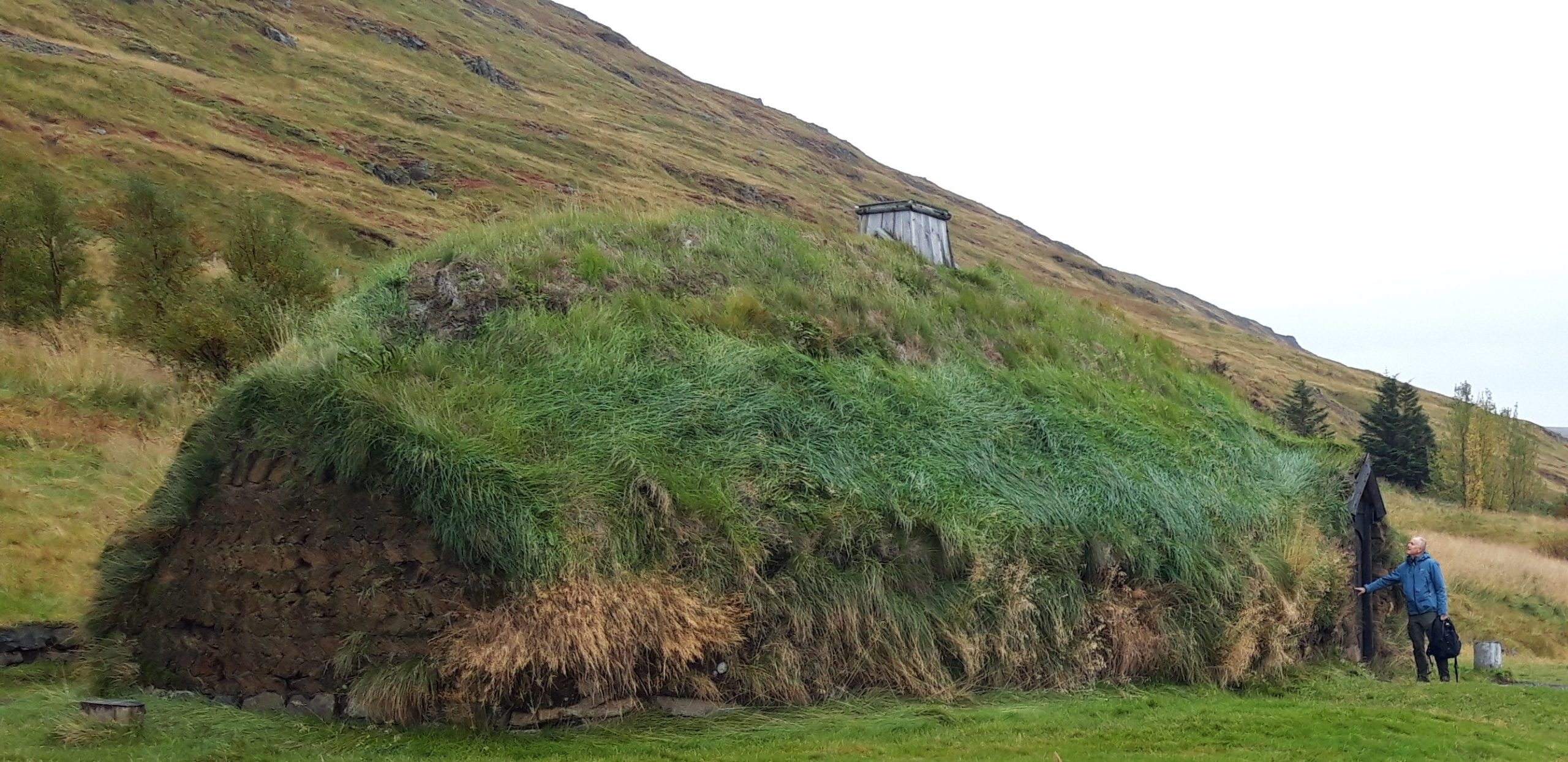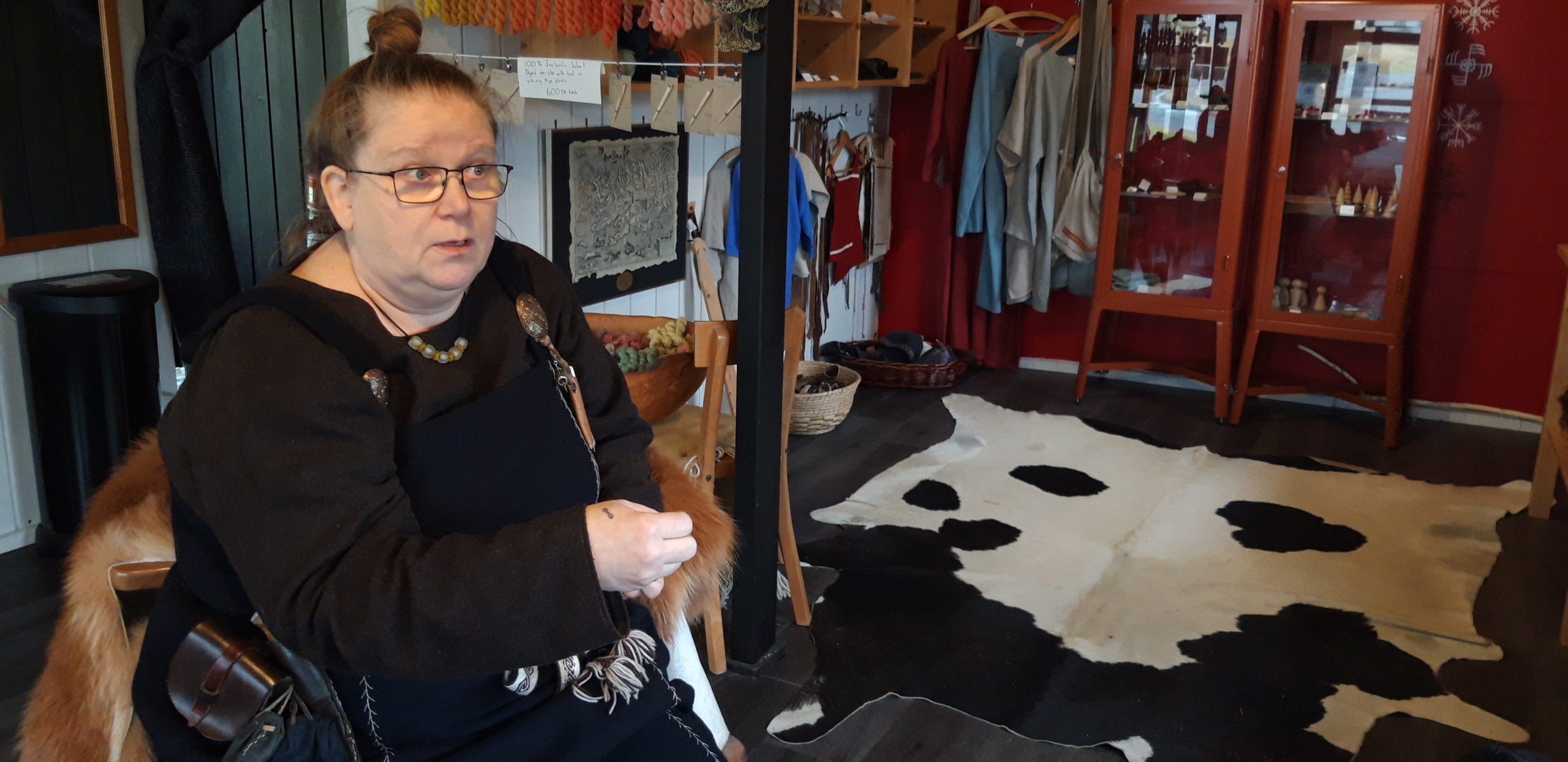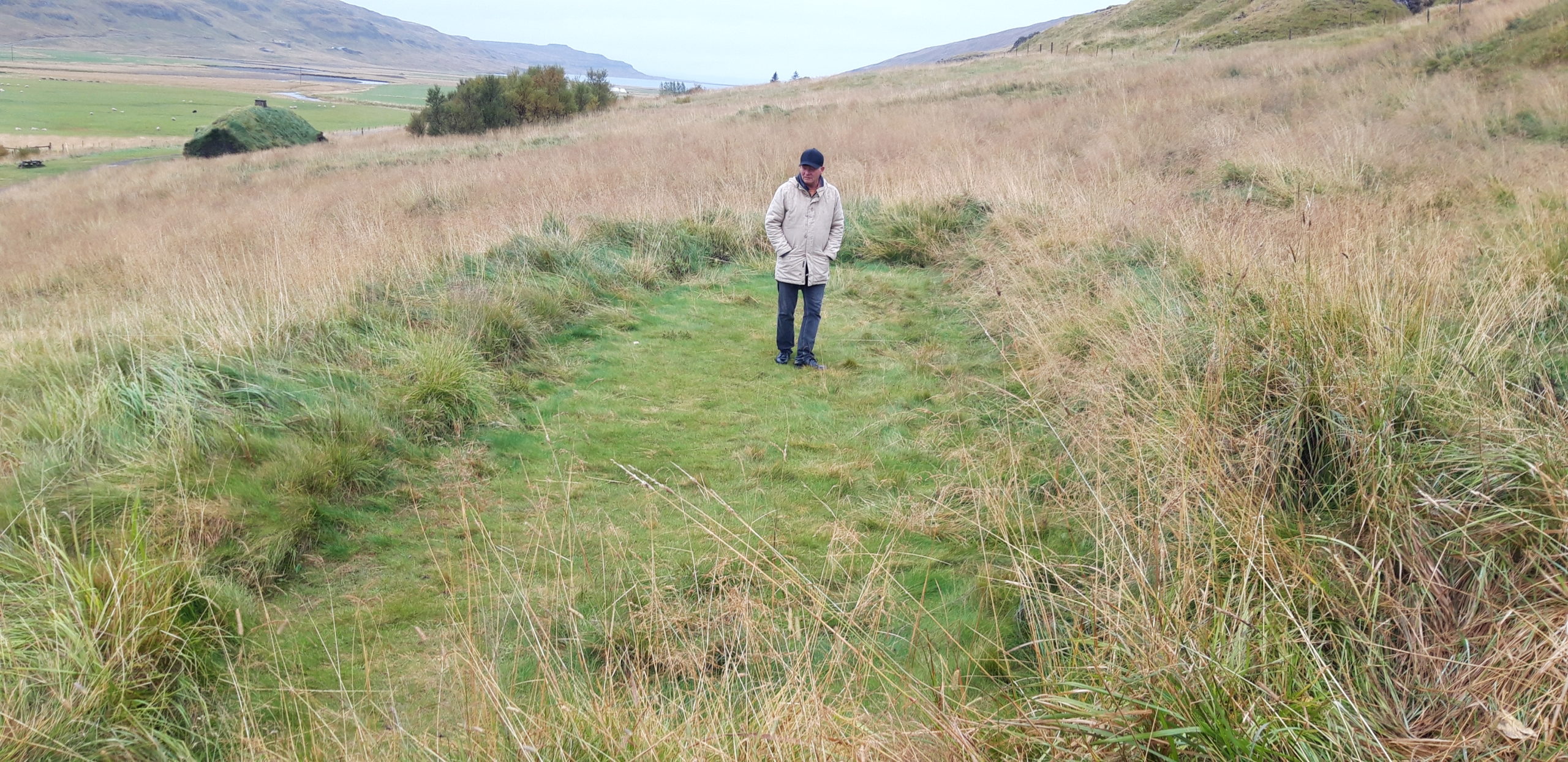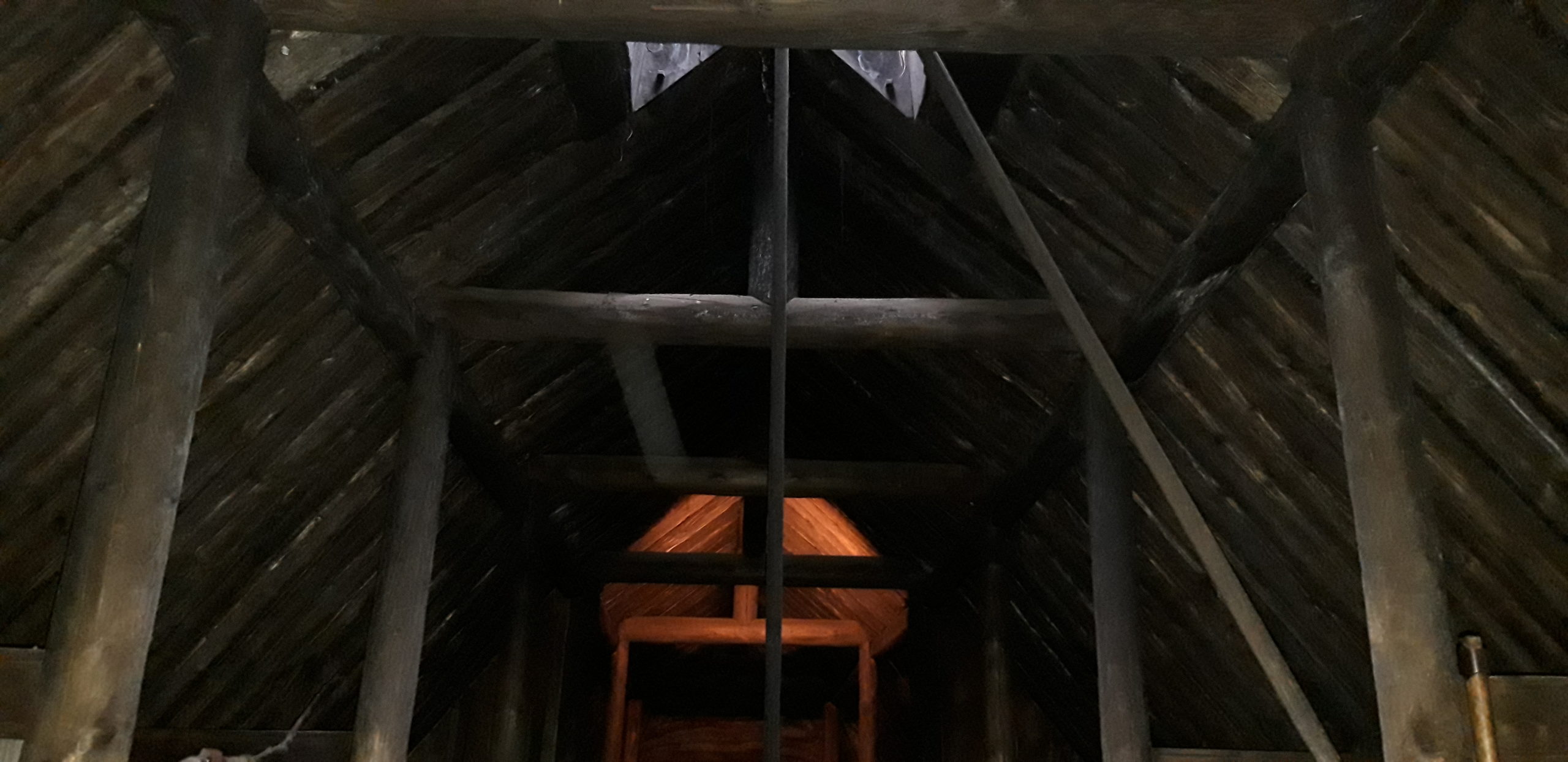Walrus may have triggered the start and the end of the first European settlements in Greenland
A visit to the original Icelandic home of Erik the Red offers a solution to a riddle: Why did Europeans set sail to Greenland in the first place?

I had expected it to be somewhat larger. Perhaps even a whiff of the regal, signs of a Viking ruler, a few glimmering swords in the corner, perhaps a fur cape, ornaments indicating the grand turns of history instigated by those tall and longhaired men and women who lived here.
My mistake, of course. Erik the Red and his wife , who went on to establish the famous Norse settlements in Greenland back in the 10th century — the first European communities in Greenland — were only youngsters when they married and built with their own hands this turf- and driftwood house on a piece of grassland given to them by Þjóðhildur’s father.
They did not lack, but they did not belong to the very wealthy of the early settlers in Iceland either. No sunlight entered their first home except through the hole in the roof over the fireplace and the floor was trodden earth.
They had a son, Leif, who would become one of the first Europeans to set a ship ashore on the American continent, but back in Iceland, where it all began, the family did not stand out. Erik was known as Eiríkur Þorvaldsson, the son of Thorvald, a common name.
The Saga of Erik
I recently visited the small museum in Haukadalur in northwest Iceland, where a replica of Erik’s and Þjóðhildur’s first family home now stands, built according to archaeological finds and other historical records.
The original stone foundation of their actual house lies covered by thick, healthy grass about 50 meters up the hill from the present replica of their house. Archeologists excavated the foundation in the late 19th century and others went deeper in the late 1990s to unearth a few additional traces of Erik’s and Þjóðhildur’s everyday life.
More details of their story stem from “The Saga of Erik the Red,” one of the Icelandic sagas of the Viking age. Other parts of their story were stitched together by decades of archaeological surveys among the ruins of the Norse in Greenland and of those who journeyed to North America.
One question, however, has not been easy to answer. Erik’s and Þjóðhildur’s life in Iceland cannot have been all bad; the land around their home was obviously fertile, the climate hospitable, Þjóðhildur’s relatives were not far away, they were part of a community here, so why did Erik and Þjóðhildur decide to leave Iceland in the first place?
Murderer on the run
The mainstream explanation has been for long that it had become too dangerous for them to stay.
Erik killed two of neighbors in duels, according to the sagas; a bloody but legal way to settle grievances at the time. Perhaps out of fear of reprisals Erik and Þjóðhildur took their woodworks with them and shifted to an island in the nearby Breiðafjörður.
After another rift, Erik killed the two sons of a new neighbor, and this time it was not legal, but murder. Erik was deemed lawless, which meant anyone was free to kill him and make away with his belongings. Only if he went into exile for at least three years could Erik be exonerated.
That was why they set sail — or so the common story went.
After weeks at sea, Erik and his company arrived in what we now know as south Greenland. They spent the first two years exploring the fjords; it must have looked very similar to what they knew from Iceland.
Walking about their home in Iceland, I noticed a stark resemblance to south Greenland: Grassy, rolling hills, well suited for the sheep, pigs and cattle they took with them from Iceland. Heftier mountains not far away, waters known for an abundance of fish and sea mammals, flocks of geese, eider, ptarmigans and other fowl. They must have felt lucky, when they found all this in Greenland.
But still, why did they leave?
On the sunny side
“Erik had the sunny side of the valley. They must have had a particularly good reason to go,” said Bjarnheidur Johannsdottir, the daily manager of the replica museum, when I visited.
She believes that walrus was a decisive factor behind the decision making.
The first wave of settlers, who had come to Iceland from Norway, found a healthy, but relatively small population of walrus in the fjords in west Iceland.
They turned walrus hides into exceedingly strong leathery ropes, valuable in all of the seafaring nations of the North Atlantic. Walrus blubber was rendered into oil. And by far the most profitable walrus product was the animal’s ivory tusks.
The Icelanders were closely connected to trading networks in Europe, and walrus tusks were sold at ever higher prices. The ivory teeth were turned into highly valuable carvings in professionalized workshops in Norway, England and elsewhere.
The export of walrus tusks long provided a handsome income for the settlers along the coast, but when Erik grew up — so Johannsdottir tells me — the trade in walrus items was in deep trouble.

“The earliest settlers had been in Iceland for the better part of a century. They had killed most of the walrus by then,” she said.
Erik and Þjóðhildur built their home in the middle of the conundrum. The waters not far to the west were known for their walruses: “We have islands in the fjords that have names indicating walruses,” Johannsdottir told me, but now the walruses were gone and Erik and Þjóðhildur was excited by the lure of walruses in Greenland.
But how would they have known of the walrus in Greenland? According to legend, after all, Erik and his entourage were the first Europeans to establish themselves there.
Others had been
Back in Copenhagen, I called on senior researcher Jette Arneborg, an archaeologist at Denmark’s National Museum, and found ample support for Johannsdottir’s interpretation. Arneborg has studied the Norse settlements in Greenland for decades and also visited Erik and Þjóðhildur’s home in Iceland.
“We have indications that they knew quite well that they would find walrus in Greenland,” she told me. She and her colleagues have found archaeological traces of Norse visits to Greenland that Arneborg believes predate Erik’s and Þjóðhildur’s arrival.
“Other Icelanders had most likely already been to Greenland and brought back word of the walruses,” she said.
She thinks that Erik’s and Þjóðhildur’s travels to Greenland were perhaps supported or even orchestrated by a consortium of Icelandic and perhaps Norwegian entrepreneurs.
“We know that sea-going ships were very expensive and seldom owned by a single person. Rather, they would belong to several people or entrepreneurs who were in it together,” she told me.

The promise of walrus in Greenland may also explain why Erik, as he returned briefly to Iceland after the first two years, was able to persuade so many other Icelanders to follow him back to Greenland:
“It makes good sense to include the walrus as a factor here,” Arneborg said. The prospect of unoccupied fertile valleys in Greenland probably also played a part as did the access to plenty of fish, fowl, seals and other foods, but Arneborg believes there is good reason to focus on the walrus: “They were most likely a very important incentive,” she said.
Vital walrus
In south Greenland, I visited some years ago the replica of Þjóðhildur and Erik the Red’s more substantive dwellings at Qassiarsuk; the place the Norse called Brattahlid. According to Jette Arneborg the replica there is probably somewhat larger than Erik’s and Þjóðhildur real-life home in Greenland would have been, but even so it seems the two of them did well there. When Þjóðhildur abandoned their old faith they even erected a small church a few steps from the main house.
I peered into their alcove in Greenland and noticed the separate walls and a separate door that would have provided the privacy they did not enjoy in Iceland. Greenland was good to them; they were better off there than in Iceland.
Their group grew to a wholesome society of farmer-hunters, numbering some 2,800 people at its height, according to the latest research (down from previous estimates of about 5,000 settlers).

The Norse remained in Greenland for more than 400 years; the trade in walrus tusks was stunningly successful. According to Smithsonian Magazine records from the 14th century tell of a single Norse boatload carrying tusks from 260 walruses that were worth more than all the woolen cloth sent to the Norwegian king by nearly 4,000 Icelandic farms for one six-year period. These figures may not all be correct, but there seems to be little doubt that the walrus trade was vitally important to the Norse.
The tusks and hides were traded for crucial necessities from Europe. Goods made of iron, for example, were indispensable to the Scandinavian lifestyle of the Norse.
Several accounts of their journeys to North America are known — but then things began to go bad. The latest records of the Norse in Greenland are from a wedding in 1408; at that time it seems that a gradual collapse of the walrus trade was putting an end to their community.
New amounts of African ivory were entering the European market; the plague in Europe hampered exchanges with the merchants in Norway and it was getting colder in Greenland; more sea ice and storms made commerce across the ocean difficult. Times were rough, and without a steady income from the tusks, the first European settlements in Greenland were no longer sustainable.
All in all, it appears that walruses might have provided both the beginning and the end of the story of the Norse in Greenland. The latest science supports this interpretation. But perhaps there is still more to be learned.
As Bjarnheidur Johannsdottir told me in Iceland when we sat looking out at Erik’s and Þjóðhildur’s first turf house in the valley and talked of his origins in Norway, his father and their travels across the sea: “I was born 20 feet from the sea myself,” she said. “Quite often I just have to go see it and smell it. I understand perfectly well why Erik may not have felt entirely satisfied here.”
CORRECTION: An earlier version incorrectly stated the date for a wedding that is the latest record from Norse Greenland. It was recorded in 1408, not 1409. This story has been updated to reflect the correct date.


